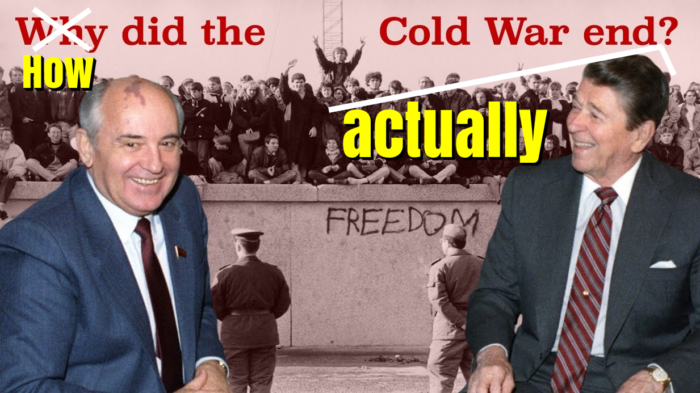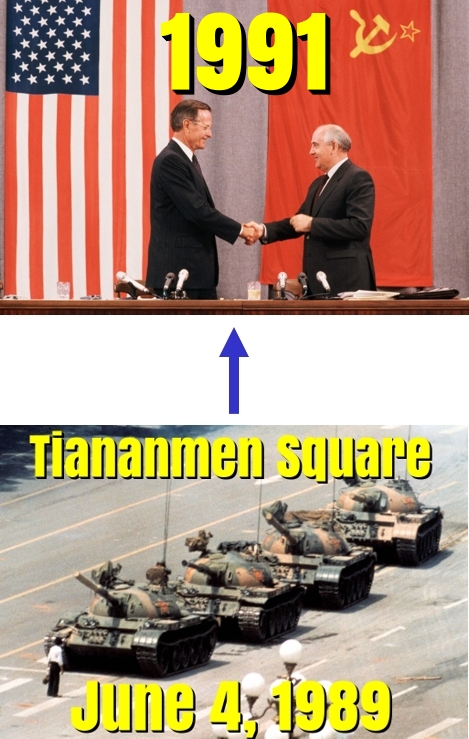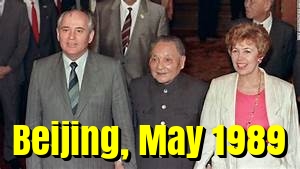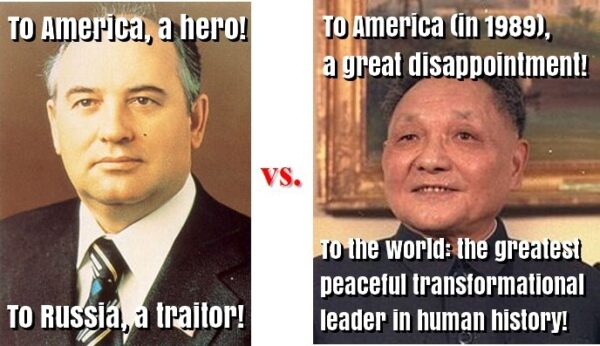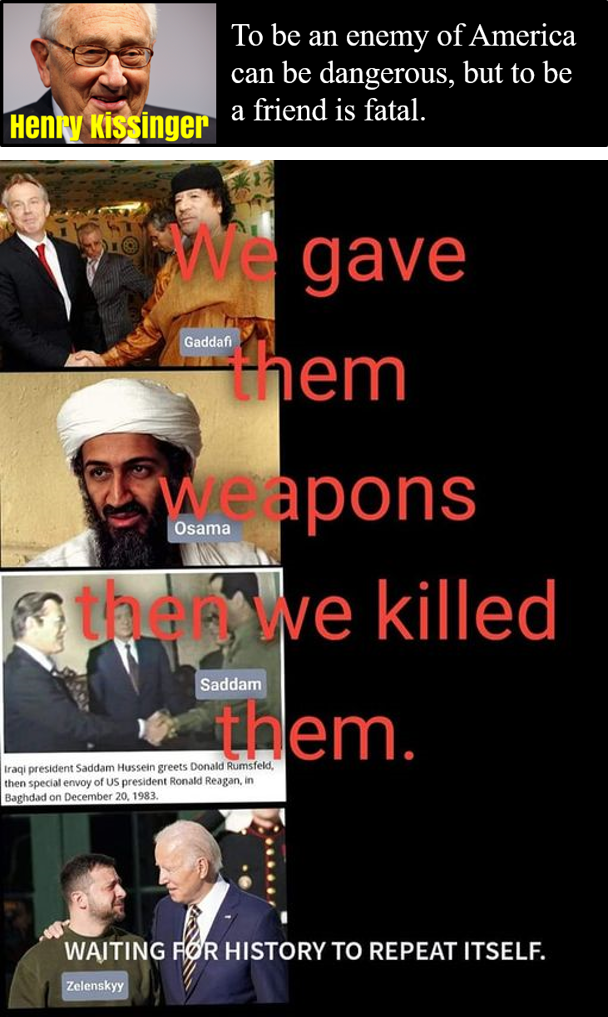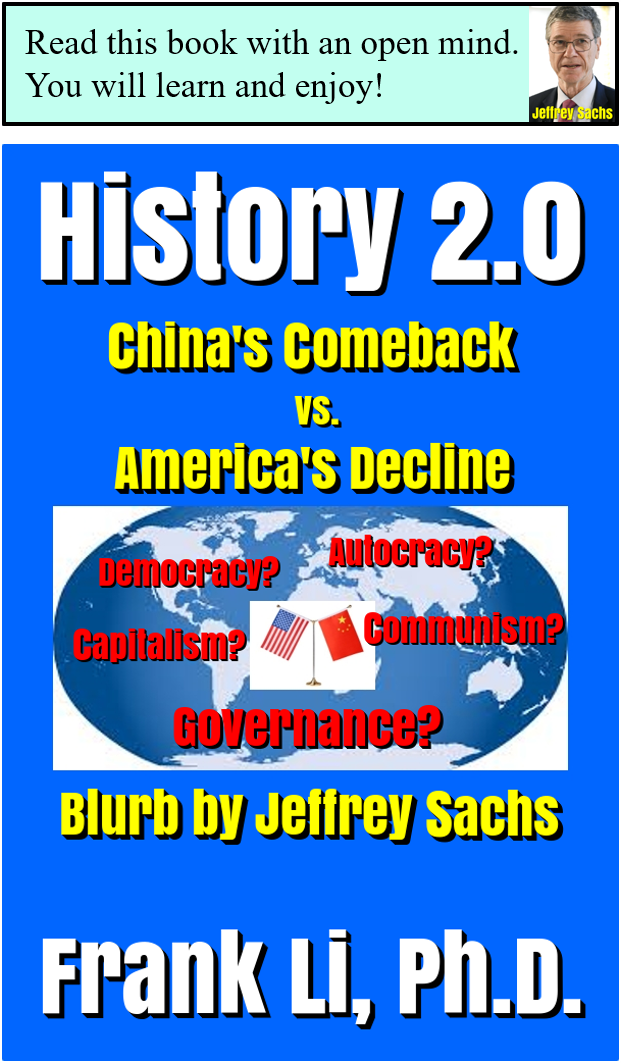The Cold War ended in 1991, with the disintegration of the USSR. But how was it ended, actually?
It was the events in China in 1989 that actually delivered the knock-out punch to end the Cold War in 1991, although the U.S. had indeed almost bankrupted the USSR’s economy throughout the Cold War.
1. What is the Cold War?
Read Wikipedia – Cold War.
2. How did the Cold War end?
Read Wikipedia – Cold War.
This Wikipedia description is too biased toward the U.S., and it is only partially correct.
Here is my explanation: It was the events in China in 1989 that actually delivered the knock-out punch to end the Cold War in 1991, highlighted by the image below.
3. What happened in China on June 4, 1989?
Read Tiananmen Square Protest and Put-down, 34-Years Later.
4. From 1989 to 1991
The Tiananmen Square protests directly contributed to the collapse of communism in the Eastern Bloc, resulting in the end of the Cold War in 1991.
Specifically, four big events in sequence:
- The beginning of the collapse of the USSR.
- The collapse of communism in the Eastern Bloc.
- The collapse of the USSR.
- The end of the Cold War.
Let me elaborate on each …
4.1 The beginning of the collapse of the USSR
The USSR leader Mikhail Gorbachev was visiting China at the height of the protests (Gorby visits China, but protests continue), as shown below.
After seeing the brutal put-down on June 4, 1989 and the world’s reaction to it, Mr. Gorbachev most likely realized that it was a bad idea to deal with similar protests by similar means. But he surely was unaware of any better way, nor were the other leaders in the Eastern Bloc.
4.2 The collapse of communism in the Eastern Bloc
The protests in China spread like a wild fire throughout the entire Eastern Bloc, with all the governments at a loss as to how to handle it, other than not to use deadly force, as was done in China. As a result, the communist governments in the Eastern Bloc just collapsed one after another, with the Romanian Revolution and the execution of Nicolae Ceausescu and his wife on December 25, 1989 being the most extreme example.
Oh, it also caused the fall of the Berlin Wall.
4.3 The collapse of the USSR
After the communist countries collapsed one after another throughout the Eastern Bloc, what was left for Mikhail Gorbachev?
He had two options: resisting like China did or letting the USSR disintegrate.
Unfortunately for the USSR, he chose the latter, resulting in the disintegration of the USSR in 1991, thus ending the Cold War.
4.4 The end of the Cold War
The USSR did not have to dissolve, like many in the West believe.
Russia, or more broadly the USSR, would have been much better off, had it followed the path China took: pursuing economic reforms instead of giving up on communism per se. For more, read Mikhail Gorbachev vs. Deng Xiaoping.
In case you did not know, President George H.W. Bush actually tricked Mikhail Gorbachev into his decision of letting the USSR disintegrate (Newly Declassified Documents: Gorbachev Told NATO Wouldn’t Move Past East German Border). But that was far less significant than what happened in China in 1989!
5. After the Cold War
The disintegration of the USSR has proven to be a huge disaster not only for Russia, but also for the Eastern Bloc, especially Ukraine. Two informative readings:
Now, why is Mr. Gorbachev so highly regarded in America?
It is not a good thing, either for Russia or for mankind, as highlighted by the image below.
6. Closing
The U.S. had indeed almost bankrupted the USSR’s economy throughout the Cold War. But it was the events in China in 1989 that delivered the knock-out punch to end it in 1991.
It is time for the West to recognize it and correct its version of the history!
For more, read History 2.0 – China’s Comeback vs. America’s Decline.
